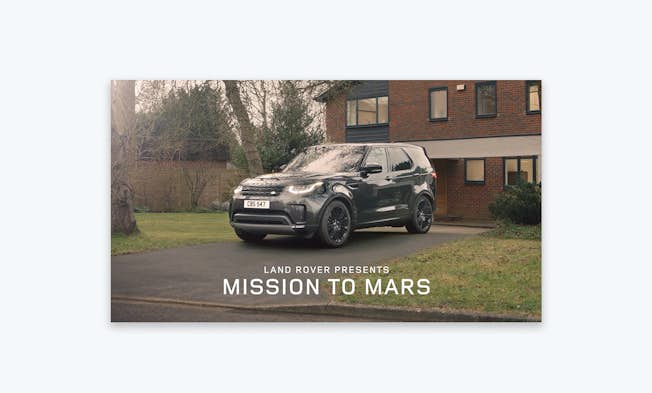There’s no doubt that social media these days can be overwhelming for consumers, which makes it difficult for companies to get noticed on the social front. That is why more and more innovative marketing tactics are required to stay ahead of the competition.
Here are some of the common traits and tactics that companies have been using in successful social media campaigns.
How to Target Your Social Campaign
Social media is an excellent tool for segmentation because it offers an easy glimpse of various demographics and their engagement rates. The platforms are pretty much made for getting to know people, and built-in insight tools are simple to use (even if you don't have an ad budget). Understanding your customers' lifestyle, habits and buying preferences is critical to successful segmentation and targeting.
Define Goals and Objectives:
When you campaign on social, remember that this is in the lead generation and awareness phase, which essentially means you're introducing yourself to them in the social campaign. Keeping a list of your active buyers will allow you to segment those people into a different category. Using customer lifetime value (CLV) as a benchmark will also help you to understand the overall value of different groups. CLV is just one example of a key performance indicator (KPI) that you will want to use as a part of your objectives.
Understanding your target audiences via your customer relationship management (CRM) tools in combination with your social insights will be especially helpful in segmenting for social advertising.
Define Your Language:
As you're working out your demographics for targeting, be sure to offer them something in a common language. Your style should reflect both your brand as well as audience preferences. You should also choose social channels in direct reference to your audience segment(s).
For instance, the under-25 set is likely to notice a quirky Instagram Story video with emojis and colourful graphics, whereas a shoe company targeting the over-50's crowd might want to highlight adventure or good health via a higher-budget ad optimized for TV, YouTube, and Facebook.
Define Your Channels:
Cross-channel marketing must be done strategically if at all. It can be incredibly beneficial when it comes to reaching a variety of demographics as well as people in various phases of the buyer's journey. You also want to ensure brand consistency across channels. But if you're tempted to reuse the same content on multiple channels, just don't. It's better to use one channel well than to use several non-strategically.
Authenticity and Timing:
Wealthsimple, an automated investing platform, did a good job of using cross-channel marketing when trying to capture the attention of the 30-ish urban millennial crowd. Their hashtag, #investingforhumans, was a simple way to take the fear out of first-time investors who probably were tempted to use the AI-based platform to try out initial investments. Using a range of platforms, they based their campaigns on key points from real life interviews. Then they shared the money stories in an honest, real-life video that was shared both on TV and across various channels.
This focus on authenticity was no doubt behind their massive success on YouTube, with one video hitting 1.8 million views and thousands of views per interview on Instagram.
Make It Visual and Action-Oriented

The classic banana brand, Chiquita, used the last solar eclipse to put a quirky spin on one of its recent marketing campaigns, proving the importance of aligning your campaigns with events that are both newsworthy and meaningful. They created a simple video to show the banana sun and used this idea to share gifs and even a real-life banana that was unveiled the day before the eclipse in New York. The result was thousands of new followers on Twitter, millions of hits on the videos, and a massive boost in engagement.
The home and hardware store Lowe’s (alongside BBDO New York) ended up winning several industry awards via a campaign that used a strategic combination of visual content across platforms like Instagram, Vine, and Snapchat to appeal to the budget-focused, DIY set. They used unique hashtags (#hypermade #LowesFlipSide #LowesFixInSix) to highlight various video series relevant to the DIY "fix it" series, which featured people using their products for DIY jobs.
One of their Facebook series offered viewers easy access to a 360 video that showed up-close how to do DIY projects. They also employed stop-motion animation to appeal to the vintage-loving crowd, as well as unedited iPhone clips as authentic-looking videos. These unique, real, and memorable visuals were not only interesting to watch, but they were also educational and useful for almost anyone who loves DIY.
The reason this was successful is that Lowe's isn't really a DIY shop – they sell the products to make things, but they don't sell the finished items. Sharing detailed and precise, step-by-step videos about how to make things cheaply is something that almost anyone can get behind. Their success lies partially in that they took it another step further, showing what people can achieve with the stuff the store sells.
Highlight Social Responsibility
Many businesses are using social issues and events to highlight either its services or its mission and philosophy. And it's becoming extremely popular for people to support brands that are doing more than just selling products. When it comes to branding, you must ensure that your social campaigns highlight a key element of your philosophy authentically in order to connect with your customers at an emotional level.
Take the socially aware dog treat and the accessory company I Heart Dogs, for instance. The company used an innovative anti-consumerism campaign just before Black Friday to highlight the importance of giving, not spending, during the holidays. The innovative company used Facebook to advertise an eye-catching slogan, “0% off,” which was a way of catching attention during the most popular time of year for shopping.
This unique (yet simple) phrasing ended up attracting enough attention to not only double their goal of offering meals to 100,000 dogs via donations, but they also had four times the sales as a result of the campaign. They ended up reaching 500,000 people on Facebook and had so much positive engagement overall that there was no doubt the campaign helped to boost customer lifetime value.
This sort of campaign shows how, if something appeals to the heart and catches you off-guard, it's very likely to be memorable. Also, highlighting a mission and cause instead of an actual product worked to promote trust in and care for the brand itself.
Make It an Experience

Airbnb used extensive market research to appeal to audiences via the simple "Live There" slogan, which, if you think about it, is actually the opposite of what you’d expect it to be ("travel"). They understood that the majority of platform users used the service to get a more culturally immersive experience. People wanted to truly have an idea of what it is like to live in a different place, rather than just being a "tourist."
This initiative is an example of authenticity and simplicity combined with surprise and emotional appeal – meaningful moments in a real way, without hype or flash. By reinforcing the fact that people are part of the adventure, the brand generated more day-to-day awareness leading to better retention.
Similarly, Land Rover’s focus on experience and adventure has made its appearance in a few different social campaigns. Several years ago they partnered with Google and YouTube to take advantage of the visual storytelling element. They also use cross-channel marketing as a mainstay since they have seen proof that it has the potential to reach people at every stage of the buying journey.
Key Takeaways
We've seen several key themes in the examples above, and for the most part, these aren’t hard to guess. But it's a strategic implementation of the right combination of factors that can make or break your marketing campaign.
First off, timing is everything. Choosing a well-known holiday or even a unique and newsworthy event will make people pay attention, especially if used alongside strategic hashtags. Timing is not only crucial in a general "time" sense, but it can also help with SEO purposes.
Another thing is to speak to the true passion behind your company and your customers. Use the same language, visuals, and style that they might use or appreciate. Speaking their language also means acknowledging mutual values and philosophy. When people see that you are real, they are more likely to trust you enough to purchase again and again.
Highlighting a meaningful experience is another thing you want to do. Weathsimple's "real" interviews are a perfect example of how real stories will almost inevitably facilitate trust from potential customers and clients. And genuine experiences, like adventure or even DIY projects, are action-oriented, achievable snippets of real life.
All in all, if you market the results, the emotions, the purpose of your product, and make reaching customers emotionally the intent of your strategy, you're unlikely to go wrong.
- Categories:
- Articles
- Social Media Marketing
Upgrade to Power Membership to continue
your access to thousands of articles, toolkits, podcasts, lessons and much much more.
Become a Power Member- Login
- View Courses
- - - -
- Courses
- Resources
- - - -
- My Account
- Change Password
- Logout




